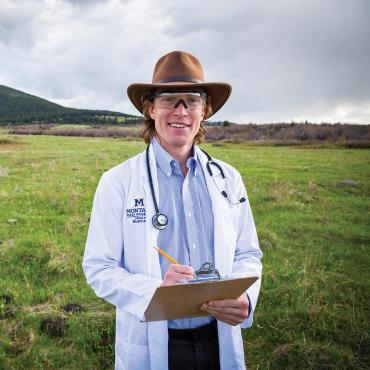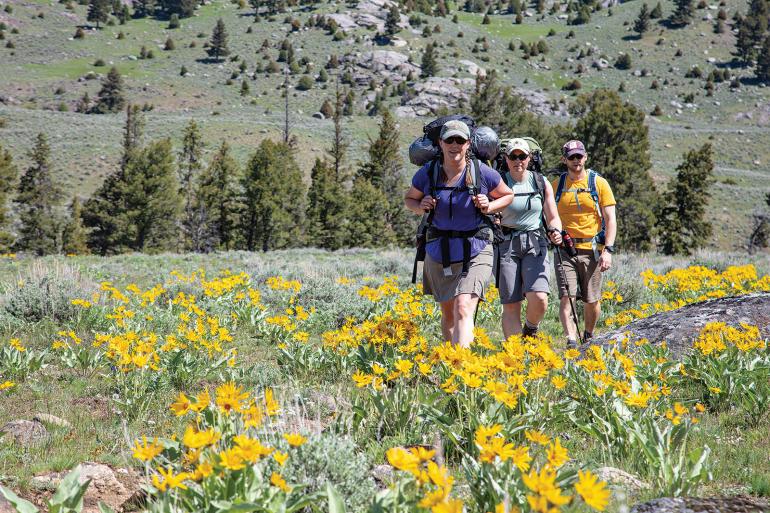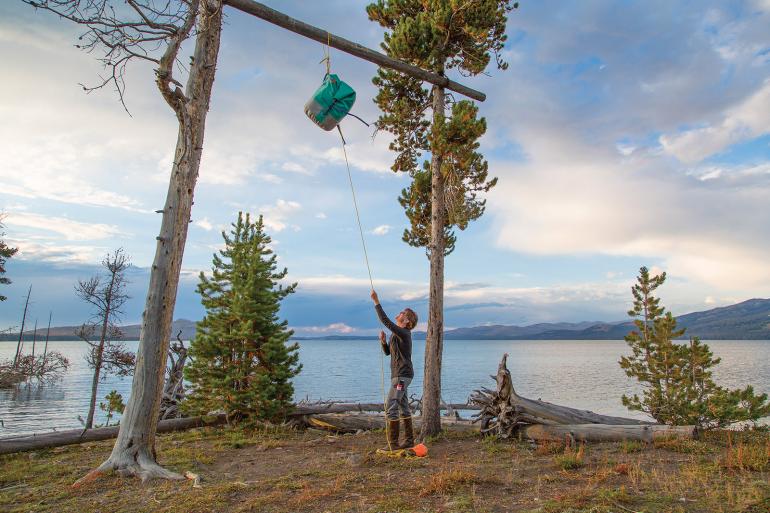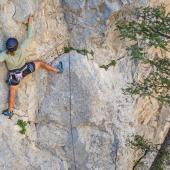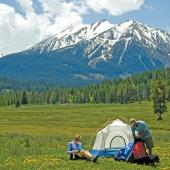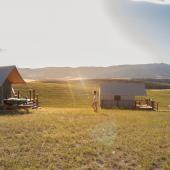Packed & Prepped
Tips for a well-planned backpacking trip.
“May your trails be crooked, winding, lonesome, dangerous, leading to the most amazing view.” —Edward Abbey
A backpacking trip is a great way to spend a summer weekend—so long as everything goes smoothly (see “Dream vs. Reality”). But with so many factors to consider, you’re bound to be caught off-guard at some point. And that’s a good thing, because next time you’ll be prepared for whatever went awry on the last go-round. So make a plan, but hang on loosely. Here are some pointers to get you started on the right foot.
Solo vs. Group
There are merits to both solo and group travel in the backcountry. When solo, you can make all the decisions yourself with no external conflict. You’ll be less distracted, and will probably feel more immersed in the environment. But solo travel is riskier, as you’re self-reliant. Plus, in a group, you can work as a team and socialize. Conflict is almost inevitable, but working through it is a good skill to practice.
Groups of more than five people can have a significant impact on other backcountry travelers. If you’re in a large party, consider splitting into smaller teams while on the trail. You can reconvene at camp, but be especially mindful of encroaching on others’ space.
Food
Meal-planning is one of the biggest challenges of a backpacking trip. Our best advice is to learn from experience. If you’re happy eating freeze-dried meals, great. If you’re culinarily inclined, camp-cooking can be an excellent outlet for creativity. Don’t be afraid to bring some perishable items for the start of your trip. Raw meat should be fine for a day; veggies up to a few days. Canned food is heavy but increases your options. Pre-made PB&Js are great for a quick breakfast before a summit attempt.
Cooking
There are two ways to cook in the backcountry: on a stove or over a fire. A stove is easier and more reliable (e.g., it works in the rain), so it’s probably your safest bet. The two most popular types run on butane canisters or white gas. Butane stoves are simple and compact, but can struggle in cold temps or at high elevations. White-gas stoves are bulkier, but they’re versatile and reliable once you learn the maintenance procedures.
If you choose to cook over a fire, be sure to abide by fire restrictions. Don’t burn the forest down, and don’t leave a mess of a firepit—especially if there wasn’t one already established.
Grizzly Country
Bears are a real concern when camping in southwest Montana. Hang your food, and cook at least 200 feet away from where you sleep. Bring nothing but water into your tent—even a tube of toothpaste can tip off a grizzly that there’s something tasty nearby.
Packing Tips
We’re not going to give you a comprehensive packing list; you can find that with an internet search. Here are some general pointers to keep it tight.
- Pack, unpack, repack. Make sure the weight is distributed comfortably, with heavier items at the bottom or closer to your back.
- Have water and snacks easily accessible. External pockets near the hips are great for water bottles as they keep the weight down low while providing easy access.
- Skimp on changes of clothes. You’re going to smell natural. Bring a change of socks and underwear if you wish, but wearing the same layers each day is a-okay.
- Pare down activity-specific items. Fishing? Don’t bring the entire tackle box. A few flies will do.
- Less is more. When in doubt, leave it out.
- Check the forecast and pack layers accordingly—but give yourself a buffer for unexpected cold. Always bring a rain jacket.
Little Luxuries
Keeping weight to a minimum is ideal, but a few creature comforts can go a long way toward enhancing your trip. Each of these items can be less than a pound.
- Deck of cards
- Harmonica or flute
- Book
- Fishing rod
- Camp shoes
- Journal
- Flask
- Binoculars
- Lantern
Dos & Don’ts
DO: Plan your route beforehand. Estimate how long each segment will take, and keep an eye on the time.
DON’T: Freak out if things don’t go according to plan. It’s getting dark? That’s why you have a headlamp.
DO: Have reliable navigation tools—and know how to use them. A paper map and compass are unlikely to fail.
DON’T: Depend solely on electronics for navigation. There are some great apps out there, but they’re useless when your phone is dead.
DO: Have a method for purifying water. Filter, droplets, tabs—whatever. Better safe than sorry.
DON’T: Think you’ll find water with a wing and a prayer. Identify likely sources before setting out.
DO: Be friendly to other folks in the backcountry. It’ll keep the spirits high for everyone.
DON’T: Act like you own the place. Yes, you do own public land, but so does everyone else!

